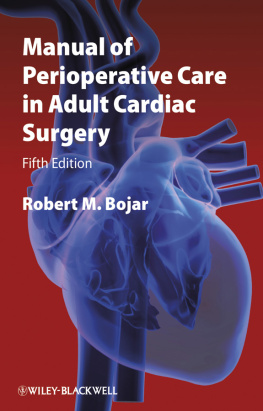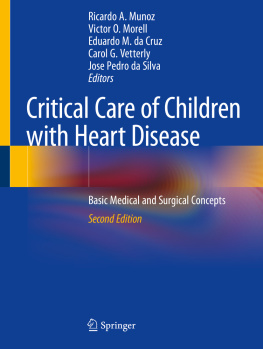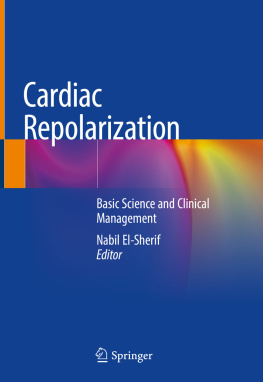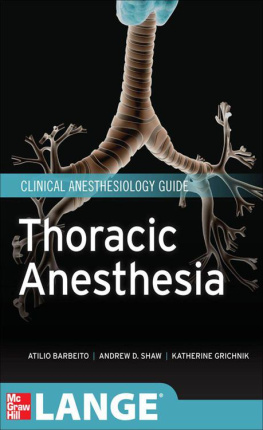
This edition first published 2011 2011 by Robert M. Bojar
Blackwell Publishing was acquired by John Wiley & Sons in February 2007. Blackwells publishing program has been merged with Wileys global Scientific, Technical and Medical business to form Wiley-Blackwell.
Registered office: John Wiley Sons Ltd, The Atrium, Southern Gate, Chichester, West Sussex, PO19 8SQ,UK
Editorial offices: 9600 Garsington Road, Oxford, OX4 2DQ, UK
The Atrium, Southern Gate, Chichester, West Sussex, PO19 8SQ,UK
111 River Street, Hoboken, NJ 07030-5774, USA
For details of our global editorial offices, for customer services and for information about how to apply for permission to reuse the copyright material in this book please see our website at www.wiley.com/wiley-blackwell
The right of the author to be identified as the author of this work has been asserted in accordance with the UK Copyright, Designs and Patents Act 1988.
All rights reserved. No part of this publication may be reproduced, stored in a retrieval system, or transmitted, in any form or by any means, electronic, mechanical, photocopying, recording or otherwise, except as permitted by the UK Copyright, Designs and Patents Act 1988, without the prior permission of the publisher.
Designations used by companies to distinguish their products are often claimed as trademarks. All brand names and product names used in this book are trade names, service marks, trademarks or registered trademarks oftheir respective owners. The publisher is not associated with any product or vendor mentioned in this book. This publication is designed to provide accurate and authoritative information in regard to the subject matter covered. It is sold on the understanding that the publisher is not engaged in rendering professional services. If professional advice or other expert assistance is required, the services of a competent professional should be sought.
The contents of this work are intended to further general scientific research, understanding, and discussion only and are not intended and should not be relied upon as recommending or promoting a specific method, diagnosis, or treatment by physicians for any particular patient. The publisher and the author make no representations or warranties with respect to the accuracy or completeness of the contents of this work and specifically disclaim all warranties, including without limitation any implied warranties of fitness for a particular purpose. In view of ongoing research, equipment modifications, changes in governmental regulations, and the constant flow of information relating to the use of medicines, equipment, and devices, the reader is urged to review and evaluate the information provided in the package insert or instructions for each medicine, equipment, or device for, among other things, any changes in the instructions or indication of usage and for added warnings and precautions. Readers should consult with a specialist where appropriate. The fact that an organization or Website is referred to in this work as a citation and/or a potential source offurther information does not mean that the author or the publisher endorses the information the organization or Website may provide or recommendations it may make. Further, readers should be aware that Internet Websites listed in this work may have changed or disappeared between when this work was written and when it is read. No warranty may be created or extended by any promotional statements for this work. Neither the publisher nor the author shall be liable for any damages arising herefrom.
Library of Congress Cataloging-in-Publication Data
Bojar, Robert M., 1951
Manual of perioperative care in adult cardiac surgery/by Robert M. Bojar. 5th ed.
p. ; cm.
Includes bibliographical references and index.
ISBN 978-1-4443-3143-1
1. HeartSurgeryHandbooks, manuals, etc. 2. Therapeutics, SurgicalHandbooks, manuals, etc. I. Title. [DNLM: 1. Cardiac Surgical Procedures-Outlines. 2. Perioperative Care-methods-Outlines. WG 18.2 B685m 2011]
RD598.B64 2011
617.412dc22
2010010689
A catalogue record for this book is available from the British Library.
Dedication
To my parents, Leah and Samuel Bojar, who instilled in me a lifelong desire for learn ing, the importance of sharing knowledge, and a dedication to provide all patients with the best possible care.
Preface
The future of cardiac surgery faces significant challenges with the widespread application of transcatheter technologies, including coronary stenting, percutaneous valves, endovascular approaches to thoracic aortic disease, and ablation of arrhythmias in the electrophysiology laboratory. Most of these technologies evolved from the concept that a less invasive approach to structural heart disease is preferred by patients to reduce trauma, minimize complications, expedite recovery, and improve the quality of life.
Although these approaches may be applicable to patients at both ends of the clinical spectrum, surgery will still remain the best approach for many patients especially those with advanced cardiac disease and significant noncardiac issues. Although less invasive surgery is seeing wider applicability, most surgical procedures require use of cardiopulmonary bypass with its inherent morbidity. There is little doubt that surgical patient acuity continues to increase, and excellence in perioperative care will remain essential to optimizing surgical results, no matter which surgical technique is used. This has become especially important with the increasing demand for transparency, with the perception that outcomes are directly related to the quality of care. Thus, it has become essential that surgical programs maintain the highest level of care to remain competitive.
The 5th edition of the Manual has been completely updated to provide current approaches to patient care. The reference lists have also been extensively updated to direct the reader to some of the best resources available on most topics. I am hopeful that this 5th edition will provide a comprehensive up-to-date review that will assist healthcare providers in delivering the best possible care to their cardiac surgical patients.
Robert M. Bojar, MD
Worcester, MA
December 2010
Acknowledgments
Cardiac surgery requires meticulous attention to detail to ensure the best possible surgical result. Decision-making in the perioperative period involves close cooperation and communication among all members of the healthcare team, including cardiac surgeons, anesthesiologists, physician assistants, nurse practitioners, and critical care and floor nurses. Identifying problems and seeking consultations with experts in other fields is important to ensure optimal outcomes. I am greatly appreciative of the efforts of many individuals who set aside valuable time to review sections of the manuscript in their areas of expertise. I would like to acknowledge the assistance of David Liu, MD, Gary Noroian, MD, Timothy Hastings, CRNA, Bettina Alpert, CCP, Kathi OLeary, CCP, and Wanda Reynolds, CCRT, for their review and comments. I am especially indebted to George Gordon, MD, whose vast knowledge of anesthesiology, echocardiography, pharmacology, and physiology allowed him to provide insight and suggestions on multiple areas of clinical management. Lastly, I am indebted to my Chief Physician Assistant, Theresa Phillips, PA, who helps coordinate the care my patients receive, and who reviewed many sections of the manuscript to ensure their accuracy.










